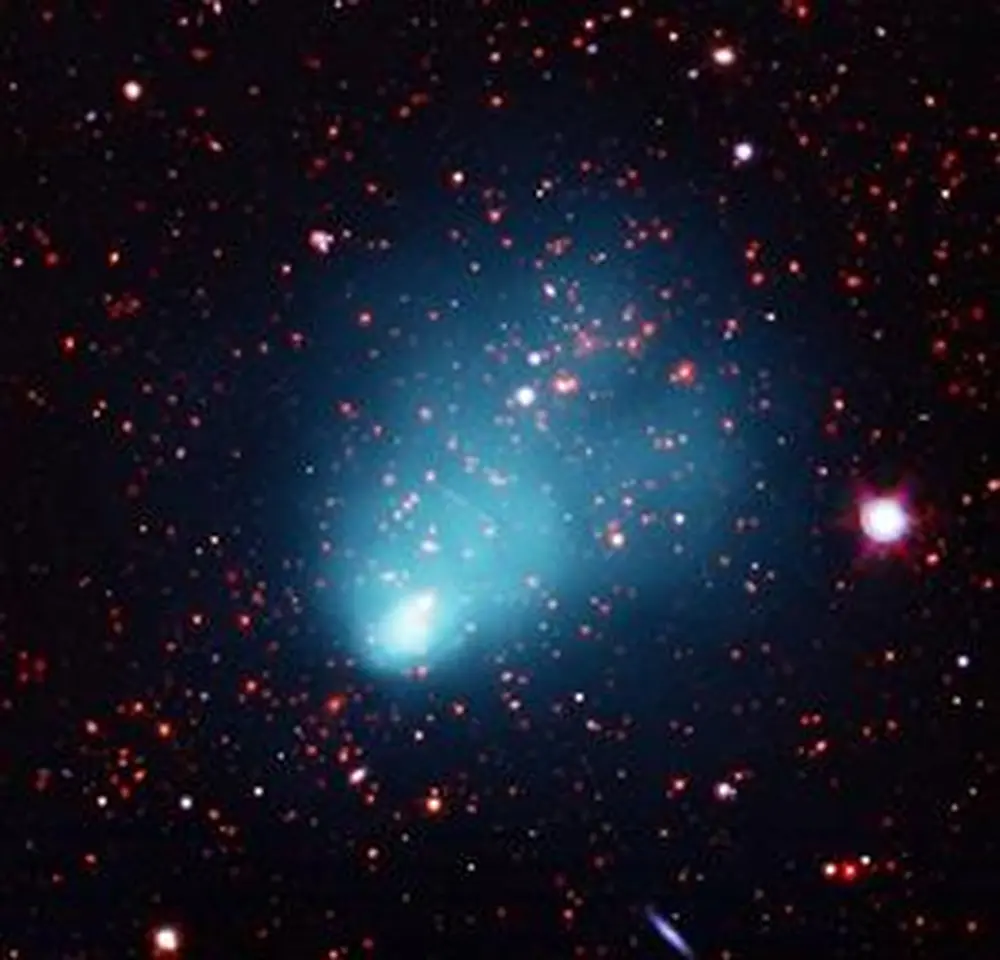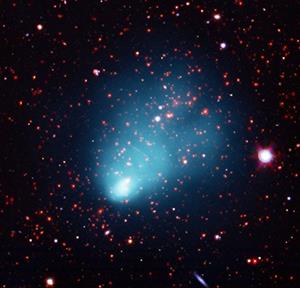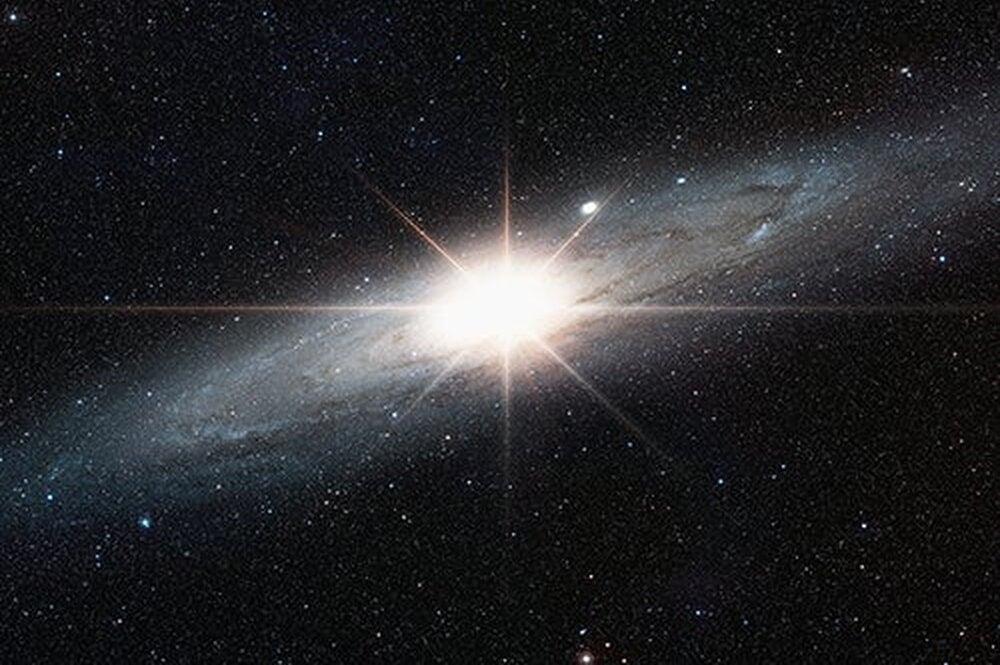

Using the Hubble Space Telescope, scientists have just pulled off one of the oldest carnival tricks in the book: correctly estimating weight by sight alone. It wasn’t your grandmother they just exposed, however—it was the largest known galaxy cluster in the distant universe.
By precisely measuring how much gravity from the El Gordo (Spanish for “fat one”) galaxy cluster warps images of more distant galaxies, a team of astronomers—including one from the College of LAS—has determined El Gordo to be 3 million billion times the mass of our sun. That’s 43 percent more massive than earlier estimates based on X-ray and dynamical studies.
Prior to this study, astronomers estimated the size of El Gordo using NASA’s Chandra X-ray Observatory and galaxy velocities measured by European Southern Observatory’s Very Large Telescope array in Paranal, Chile. They noticed that the cluster looked as if it might be the result of a titanic collision between a pair of galaxy clusters, which the researchers describe as seeing two cannonballs hit each other.
The fact that the clusters were colliding cast doubt on earlier size estimates, which were based on the motions of the galaxies moving inside El Gordo along with high gas temperatures. El Gordo is about 9.7 billion light years from Earth.
“So that’s where the Hubble data came in,” says Felipe Menanteau, professor of astronomy. “We were in dire need for an independent and more robust mass estimate, given how extreme this cluster is and how rare its existence is in the current cosmological model. There was all this kinematic energy that was unaccounted for and could potentially suggest that we were actually underestimating the mass.”
Hubble was able to measure how much El Gordo’s immense mass warped our view of space. The telescope’s high resolution allowed measurements of “weak lensing,” where the cluster’s gravity subtly distorts space like a funhouse mirror and warps images of background galaxies. The amount of warping indicated how massive the cluster really is.
Though other galaxy clusters as big as El Gordo do exist, such as the so-called Bullet Cluster, nothing like El Gordo has ever been seen to exist so far back in time, when the universe was roughly half its current age of 13.8 billion years. The team suspects that such large clusters are rare in the early universe.
“It’s given us an even stronger probability that this is really an amazing system very early in the universe,” says James Jee, of the University of California at Davis, another astronomer who worked on the study. A small fraction of the mass of El Gordo’s mass is locked up in several hundred galaxies that inhabit the cluster. The rest is tied to dark matter, an invisible form of matter that makes up the bulk of the mass of the universe.
Next, the team will try to get a large mosaic image of the cluster, as it doesn’t fit into Hubble’s field of view. It’s like looking at a giant’s head and shoulders from the side, researchers say.
“We can tell it’s a pretty big El Gordo, but we don’t know what kind of legs he has, so we need to have lots of fields of view to get the complete picture of the giant,” Menanteau says.
Hubble is a project of international cooperation between NASA and the European Space Agency. NASA’s Goddard Space Flight Center in Greenbelt, Md., manages the telescope.


